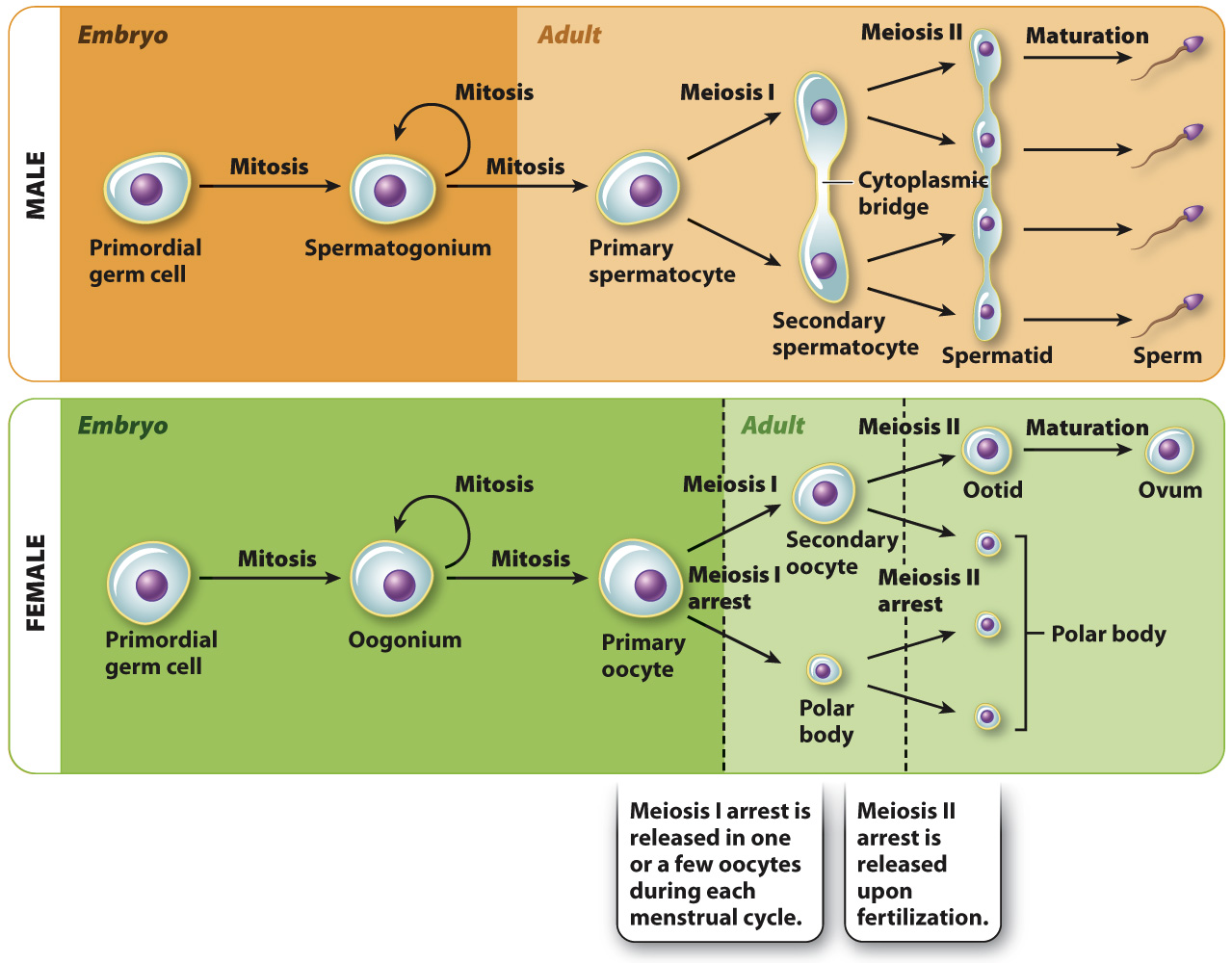Male and female gametogenesis have both shared and distinct features.
The formation of gametes is called gametogenesis. Gametogenesis follows the same steps in males and in females, but there are striking differences in timing (Fig. 42.19). Spermatogenesis is the formation of sperm. It occurs in the seminiferous tubules of the testes beginning at puberty and continuing throughout life. The process starts with spermatogonia, diploid stem cells that divide by mitosis to ensure a continuous population of precursor cells. During puberty and throughout adulthood, these cells differentiate into diploid primary spermatocytes, which undergo the first meiotic division to produce two secondary spermatocytes and the second meiotic division to produce four haploid spermatids joined by cytoplasmic bridges. They subsequently separate from each other to become distinct haploid cells. The maturation process, in which spermatids become spermatozoa or sperm, begins in the testes and continues in the epididymis, where they acquire motility. Spermatogenesis takes about 2 to 3 months.

Oogenesis is the formation of ova or eggs. The diploid precursor cells are called oogonia. These cells form during embryonic development and divide by mitosis. Some oogonia differentiate into diploid primary oocytes during fetal development. These enter the first meiotic division but arrest immediately in prophase I, the first stage of meiosis. All these steps take place before the female is even born. At birth, a female has about 1 to 2 million primary oocytes, all arrested in prophase I of meiosis. They do not resume the first meiotic division until a menstrual cycle. Therefore, remarkably, they all remain arrested for at least 12 years (from birth to the age of menarche) and some as long as 50 years (to the age of menopause).
In the first phase of the menstrual cycle, approximately 10 to 20 follicles, each containing an oocyte, begin to mature in response to rising FSH levels. One of these follicles becomes dominant, allowing the primary oocyte to complete the first meiotic division. This division is asymmetric, leading to the formation of a large secondary oocyte and a much smaller polar body. The unequal division allows most of the cytoplasm to be partitioned into the secondary oocyte. The secondary oocyte is released from the ovary and immediately enters the second meiotic division, but again arrests, this time in metaphase II. The secondary oocyte remains arrested in metaphase II until fertilization takes place. Upon fertilization, the second meiotic division continues, producing an ootid and another polar body, again allowing most of the cytoplasm to end up in the developing egg. The ootid quickly develops into a mature ovum or egg.
Quick Check 4 When are primary oocytes and spermatocytes produced, and how many gametes result from one diploid cell in females and males?
Quick Check 4 Answer
In females, oogonia differentiate into primary oocytes before birth and therefore a female is born with all the primary oocytes she will have. In males, by contrast, spermatogonia do not differentiate into primary spermatocytes until puberty, but sperm can be produced throughout a male’s lifetime. Only one of the four products of meiosis becomes a gamete in females, whereas all four products of meiosis become sperm in males.